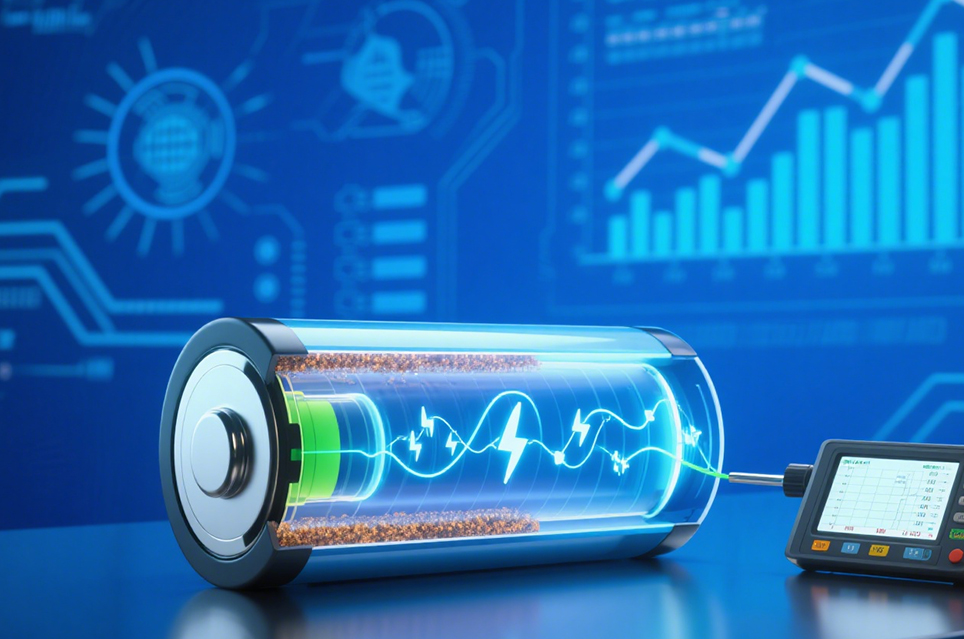Film-forming additives:
Representative substances: Ethylene Carbonate (EC), Fluorinated Ethylene Carbonate(FEC), Propylene Carbonate (PC)
Mechanism of Action: During the first charge-discharge cycle, they form a dense SEI film (primarily composed of Li₂CO₃ and LiF) on the negative electrode surface, inhibiting the continued decomposition of the electrolyte and enhancing cycle stability. For example, FEC can reduce the interface impedance of graphite negative electrodes by 30% and extend cycle life by twofold.
Flame retardant additives:
Representative substances: Trimethyl Phosphate (TMP), Ethyl Hexafluorophosphate (FEP)
Mechanism of action: By releasing phosphorus/fluorine radicals to capture active groups in combustion chain reactions, the oxygen index of the electrolyte is increased from 20% to over 28%. Adding 5% TMP can increase the flash point of the electrolyte from 130°C to 180°C.
High-voltage additives:
Representative substances: Vinyl Ester Sulfate (VEC), Lithium Bis(Trifluoromethylsulfonyl)imide (LiTFSI)
Mechanism of action: Forms a stable CEI film on the cathode surface to inhibit electrolyte oxidation and decomposition at high voltages (>4.5V). VEC can improve the capacity retention rate of NCM811 batteries from 60% to 85% during 4.5V cycling.
Lithium deposition inhibitors:
Representative substances: Trifluoroacetic Acid Ester (TFAE), FEC
Mechanism of action: By regulating the solvation structure of lithium ions, a uniform Li⁺ diffusion layer is formed on the negative electrode surface, inhibiting the growth of lithium dendrites. Adding TFAE can extend the cycle life of lithium metal batteries from 300 cycles to 800 cycles.
Overcharge Protection Additives:
Representative Compounds: p-Benzenedicarbonitrile (PTMN), p-Dimethylbenzoic Acid (DMTB)
Mechanism of Action: During overcharging (>4.5V), these additives rapidly polymerize to form an insulating film, blocking electron transport. With a response time of <10ms, they can reduce the overcharge thermal runaway temperature of the battery from 250℃ to 180℃.

Analysis of Core Segments in the Industrial Chain
Upstream Raw Materials:
Basic Chemical Raw Materials: Vinyl Carbonate (VC), Fluorinated Vinyl Carbonate (FEC), Cyclic Phosphoric Esters, etc. Among these, VC production capacity is constrained by environmental regulations, with domestic effective capacity estimated at approximately 80,000 tons in 2024, resulting in a supply-demand gap of 30%.
Lithium Salt Raw Materials: Lithium bis(fluorosulfonyl)imide (LiFSI), with global production capacity of approximately 20,000 tons in 2024, with China accounting for 70% of the market. The cost of LiFSI is three times higher than that of LiPF₆.
Midstream production and manufacturing:
Additive types: Film-forming additives (45%), flame-retardant additives (25%), and high-voltage additives (20%). Leading companies include Tianci Materials and Xinnuo Bang, with a combined market share exceeding 50%.
Downstream application scenarios:
Electrolyte systems: liquid electrolytes (90%), gel electrolytes, and solid-state electrolytes. Among these, high-nickel ternary batteries (NCM811) use 20% more additives than lithium iron phosphate batteries.
VC Supply and Demand Discrepancy:
Demand Side: Global electrolyte demand is projected to reach 1.2 million tons in 2024, corresponding to a VC demand of 60,000 tons. Actual supply stands at 42,000 tons, with the shortfall primarily attributed to the recovery of lithium-iron phosphate batteries (demand growing by 40% annually).
Supply Side: Strict environmental approval processes and a 2-3 year construction cycle for new capacity mean that an additional 20,000 tons of capacity is expected to be added by 2025.
Synergistic Application of LiFSI:
Performance Advantages: Thermal stability >200°C (LiPF₆ is 60°C). When mixed with LiPF₆ at a 1:9 ratio, it can increase the capacity retention rate of NCM811 batteries from 50% to 75% at -20°C, with a capacity retention rate >80% after 1,000 cycles.
Industrialization Progress: By 2024, domestic LiFSI production capacity will reach 15,000 tons. CATL and BYD have already achieved mass production applications, with costs decreasing from 1.5 million yuan per ton in 2022 to 800,000 yuan per ton.
Functional optimization of LiODFB:
Mechanism of action: Combines film-forming and conductive functions; adding 2% can increase battery specific capacity by 5 mAh/g and extend high/low-temperature cycle life by 15%.
Next-generation additive technology directions:
High-entropy additive systems: Achieving multifunctional regulation of the SEI film through multi-component composites (e.g., LiFSI+FEC+VC), expected to enter the pilot production stage by 2025;
Smart-response additives: Additives containing thermosensitive polymers that rapidly cross-link to form an insulating layer at high temperatures (>60°C), preventing the spread of thermal runaway. Currently in the laboratory R&D stage.
Contact us to learn more about our advanced electronic chemicals and speciality polymer materials, and how they can enhance your production performances.